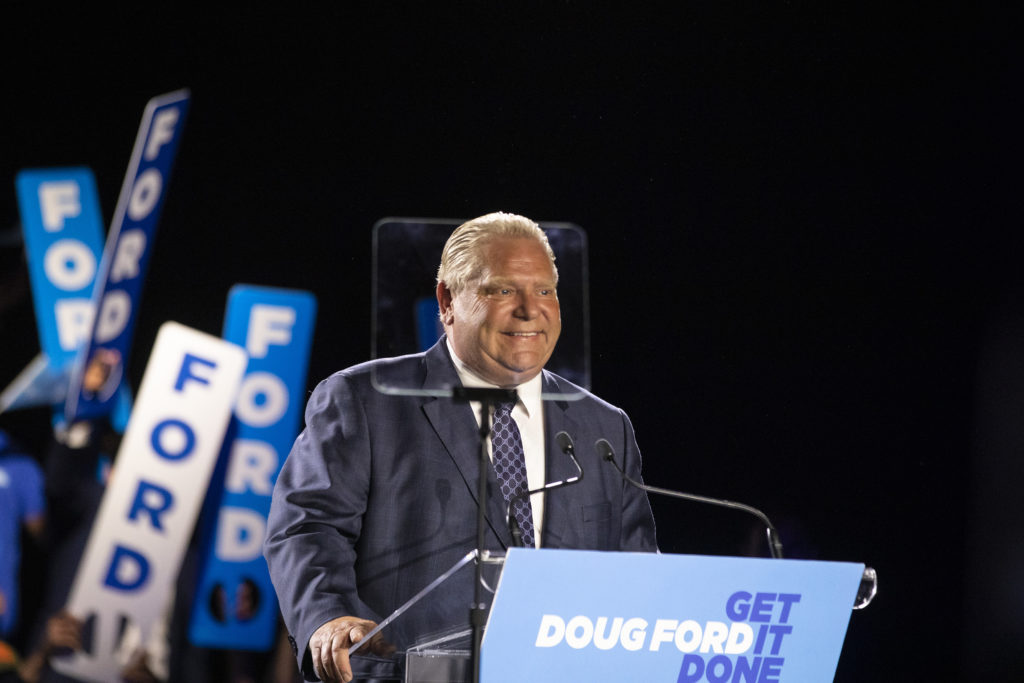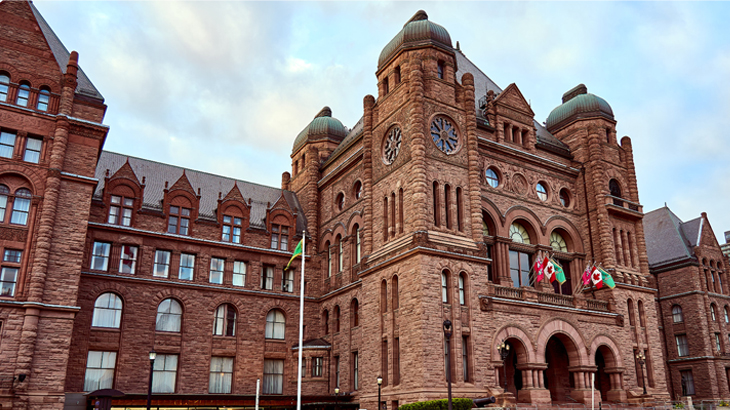Welcome to Earnscliffe Strategies’ Election Insights. This is our weekly analysis of the 2022 Ontario election, summarizing the key issues, strategies motivating the parties and major developments from the campaign trail.
Ford more years
The Ontario PC Party and Doug Ford sailed to victory last night in 43rd provincial election. After four weeks of consistently leading in most major polls, Premier Ford quickly claimed a second majority mandate, stronger than the first, with most media outlets reporting the victory within minutes of the polls closing at 9:00 pm ET.
All-in-all, the PCs secured 83 seats for the upcoming legislative session with nearly 41 per cent of votes cast, an increase of seven seats from the 76 they held from 2018. The seat gains for the PCs came mostly from the 905-region of the Greater Toronto Area, southwestern Ontario and northern Ontario at the expense of the opposition NDP.
For their part, the NDP will return to Queen’s Park as the Official Opposition, but with a smaller caucus this time, and without a leader. Long-time party leader Andrea Horwath announced late last night she would resign as party leader after 13 years in charge, despite winning re-election in her riding of Hamilton Centre.

The NDP managed to win 31 seats last night on just more than 24 per cent of votes cast, down from the 40 seats won in 2018. To every election there is a silver lining, the NDP were able to win over a key urban riding in Ottawa where Chandra Pasma defeated incumbent PC Jeremy Roberts, after a razor thin loss in Ottawa West—Nepean in 2018. Ultimately though, this result fell well short of the party’s stated goals of defeating Doug Ford and forming government this time around, for which Horwath paid the hefty price.
The Ontario Liberals failed to make any marked improvements over their results from the 2018 election. The party did succeed in securing one additional seat this time around in Toronto’s Beaches—East York, to bring their total to eight but failed to achieve official party status. After being defeated in his own race in Vaughan—Woodbridge Del Duca made the decision to step down and make room for a new leader. The three positive lights for the liberals are that the party has been built back up financially from the huge hole left in 2018, they did increase their share of the popular vote by four per cent and they were the second choice in over 50 per cent of the ridings in Ontario.
For its part, The Green Party also saw their percent of the popular vote increase in last night’s election. The Green Party secured nearly six per cent of the popular vote, up from 4.6 per cent in 2018, but were still only able to return Schreiner and secure one seat in the legislature, despite a strong showing in Parry Sound—Muskoka where hopes had been high.
Overall, this election may be best remembered for the historically low turnout. As of writing, Elections Ontario reports only 43 per cent of eligible voters cast a ballot in this election, down substantially from the 57 per cent turnout in 2018. The previous record for lowest turnout was 49 per cent in the 2011 election. On a more positive note, more than one million votes were cast during the advance polling period, totalling nearly 10 per cent of votes cast, and more than 126,000 votes were mailed in, both significant increases over the 2018 results.
Polling update
The popular vote ended up closely resembling the results of our final election survey, conducted from May 27-29 with 1000 Ontarians, with small differences between our final vote intent data and popular vote falling within the margin of error.
Over the last four weeks, we’ve noted that a PC majority seemed likely, and increasingly so in the last week of the campaign. The PCs capitalized on their strength in the GTA, in which they have led throughout the campaign, and built a coalition across many different demographic groups to solidify their majority.
Though tied with the NDP for popular vote, Liberal seat gains were hampered by relative inefficiencies in the way their vote was distributed and, as our data released earlier in the week suggested, perhaps a lack of excitement and confidence in the party among would-be supporters.
EarnscliffeLife – Post-Election Webinar
In case you missed the live broadcast earlier this afternoon, click the link below to watch our post-election analysis webinar with Allan Gregg, Chris Ball, Rahul Bedi, Mary Anne Carter, Julie Garner and Hilary Martin.

